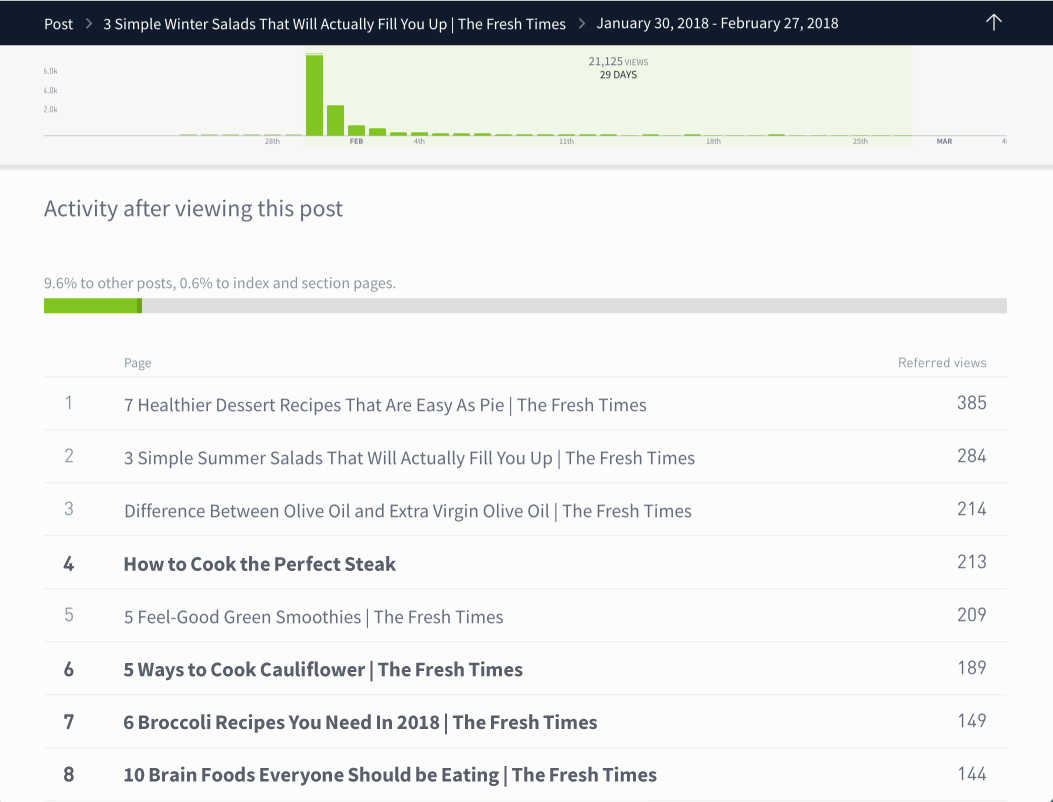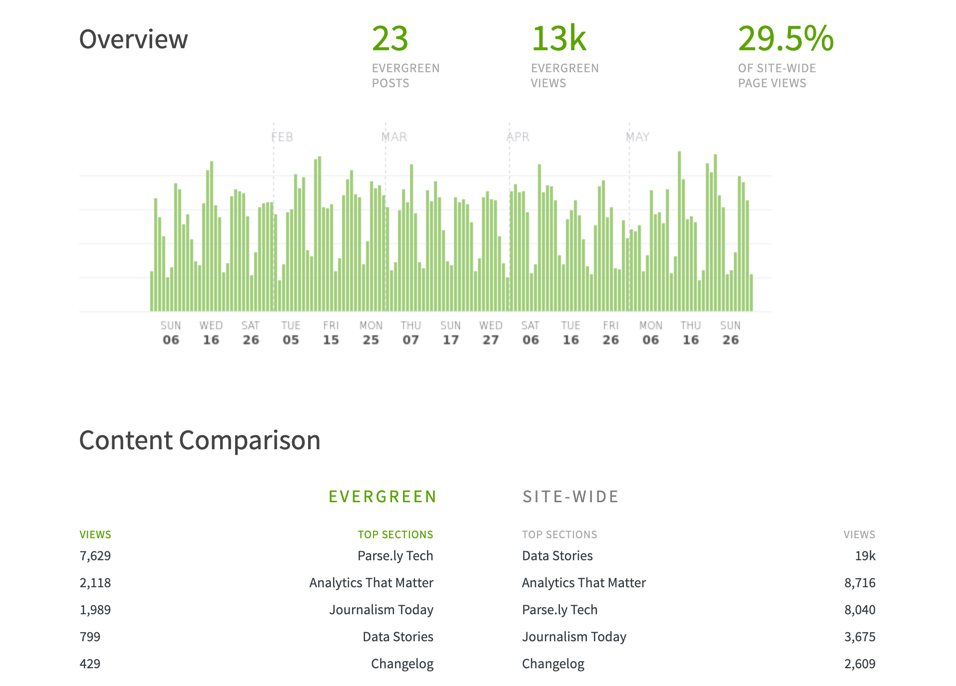3 Content Saturation Challenges and How to Overcome Them

There is so much content circulating online that an astonishing 91% is never seen. Content saturation negatively affects businesses and poses a challenge for content marketers whose job is to make sure their content gets viewed.
So how can marketers create content to gain traction in such a congested space? The key to combating content saturation is using a data-driven strategy to boost your existing content and create new content that stands out in a crowd.
Table of Contents
- What is content saturation?
- Challenges of content saturation
- Overcoming content saturation
- Use Parse.ly to combat content saturation
What is content saturation?
Content saturation happens when even the best piece of content becomes buried within search results in an overcrowded niche. It’s a result of producing more digital content about a specific topic than people can possibly consume, and it’s why the competition around SEO is so fierce.
Increasing the amount of content you produce is not the solution. Instead, focus on improving the quality of your content.
Challenges of content saturation
Content saturation presents a major barrier for readers to access your content. And without readers engaging with your content and helping to expand your brand influence, you’re likely to see a lower ROI on your content marketing activities. Here’s why:
1. Lower rankings for your content
Strategically, brands produce content that targets keywords with high search volumes. That can be a smart approach done wisely. Consider a business targeting the word “apple” when it creates related content, such as “How to choose the best apple sauce maker.” That’s a mistake, as, of course, Apple and its products own and dominate the search intent for that keyword, leaving everyone else in the SEO dust. In this case, the brand would be better off optimizing its content for a different keyword.
Note: In keyword competition, new content ranks lower than existing content targeting the same keywords, which makes it difficult to reach customers with new content. Yet in a dynamic field like content marketing, reaching your customers quickly is crucial.
2. Reader fatigue
People tire of reading about the same things over and over. If you’re not adding anything new to the conversation, consumers won’t engage. Take COVID-19. It dominated global news for months on end, but eventually people’s interest waned. Reader fatigue leads to lower interest and less engagement.
3. Increased costs
Content saturation forces businesses to diversify their marketing channels, which increases overall marketing costs. And if you must employ multiple marketing strategies to reach new audiences, such as bidding on AdWords or allocating budget on PPC marketing to increase your SEO—your customer acquisition costs can increase, lowering your overall ROI.
Overcoming content saturation
Combatting content saturation requires a data-driven content strategy that informs what type of content to create and the best methods to distribute it. To operate successfully in the crowded content landscape, you need to identify and capitalize on relevant opportunities for impact. By taking a data-driven approach, content marketers can address the challenges of content saturation. Here are four ways:
1. Use research to find content gaps
To tackle content saturation, you need to understand what topics are saturated—only then can you make informed decisions on content strategy and implementation.
That may include digging through keyword search volume data to identify areas you can target. Look for keywords with low competition to find non-saturated niches.
Research also means finding the right distribution channel for your content. HelloFresh uses Parse.ly to gain insight into what content to publish and where to distribute it. For example, they discovered that LinkedIn was an unsaturated medium to distribute work-friendly lunch recipes that generated conversions.
HelloFresh also leveraged the Parse.ly “Activity after viewing this post” feature to see what content their audience viewed afterward, which helped them to create the best content to drive engagement.

2. Refresh old and outdated content
Refreshing content increases your content’s visibility as Google’s SERP favors regularly updated pages. Plus, topics tend to evolve over time, especially as trends change. Producing updated content helps cut back on fatigue and keeps readers interested.
A content refresh can come in many forms: you can rewrite the content completely, update metatags and alt descriptions, or change your internal links. After a refresh, your content is more likely to rank higher for keywords, leading to higher engagement. If you rank higher for keywords, you can also improve your click-through rates, which will lead to increased traffic.
Regularly incorporate content refreshes into your strategy. Not only do they combat content saturation, they also save you time and reduce content creation cost. There is a caveat: if content is not ranking in the first place or the content is outdated, you may need to start from scratch.
3. Repurpose content into something new
Repurposing content is another way to effectively rank for keywords and raise visibility without having to create new content. Repurposing content means reworking an existing piece of content into new forms, for example, breaking up a white paper called “Fitness Trends in 2022” into a fitness and health podcast series. You could also turn the white paper into infographics to distribute across your social media platforms.
Repurpose content to capitalize on low-competition keywords in non-saturated niches and amplify the footprint of your website.
Content Analytics tools like Parse.ly can help you decide which content to repurpose. For example, the Parse.ly Top Sections feature can pinpoint the content most engaged with on your website.
4. Create and promote evergreen content
Creating evergreen content ensures that your content remains relevant in the long term, so you won’t necessarily have to create more in an already saturated landscape to stay relevant.
Evergreen content tends to be educational, relevant, and resourceful content, like a how-to guide or recipes. You may already have evergreen content in your archive, and you should take advantage of this by continually re-promoting it.
WIRED uses Parse.ly to identify evergreen content and decide where to re-promote it with our evergreen report. It gives you a quick way to identify your top evergreen content as well as the sections, authors, and tags with higher amounts of evergreen content. Use it to kickstart your evergreen strategy.

Use Parse.ly to combat content saturation
A comprehensive data-driven platform like Parse.ly will help you make better-informed content strategy decisions and help your content overcome the sea of saturated content.
Want to learn more about how our customers are using Parse.ly to stand out in a crowded content landscape?